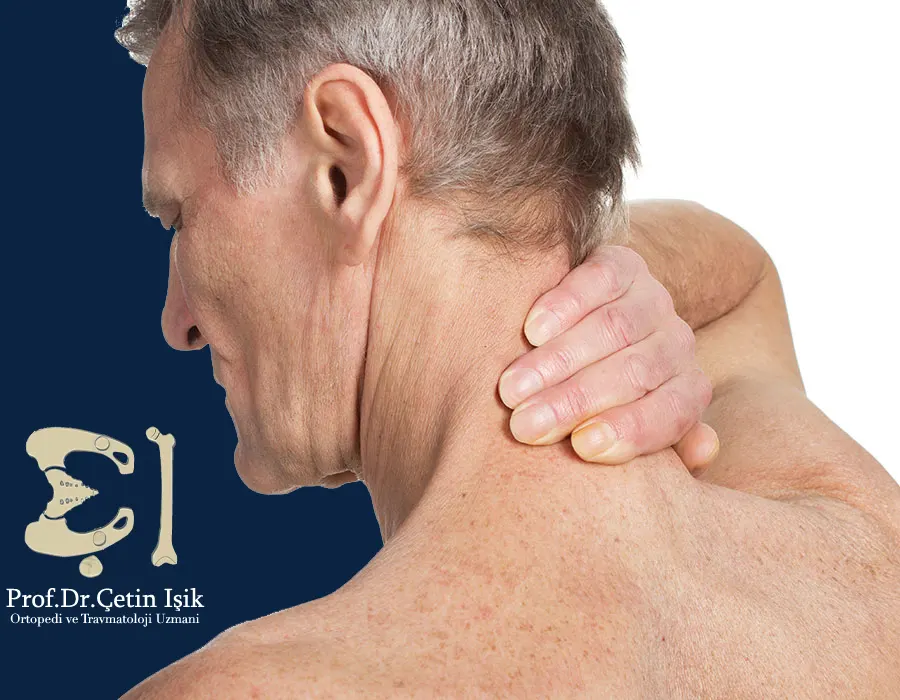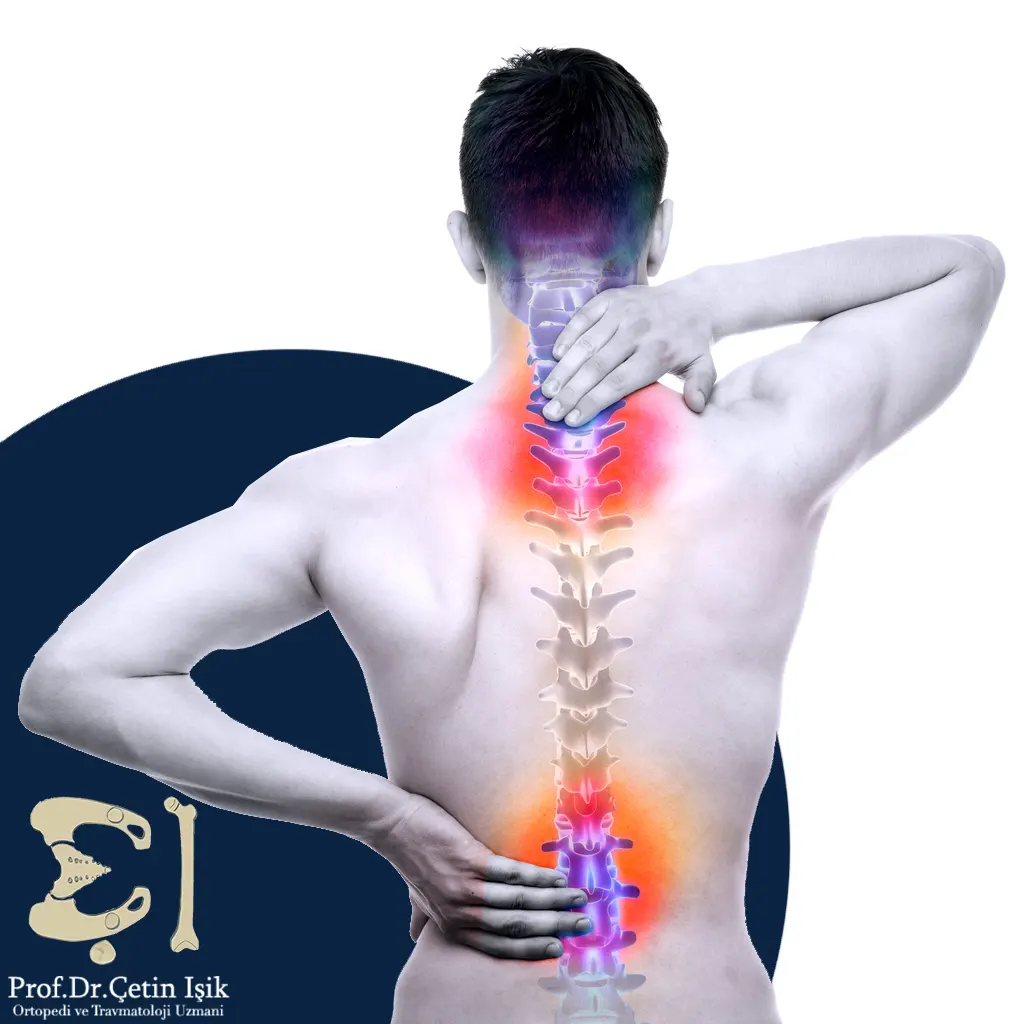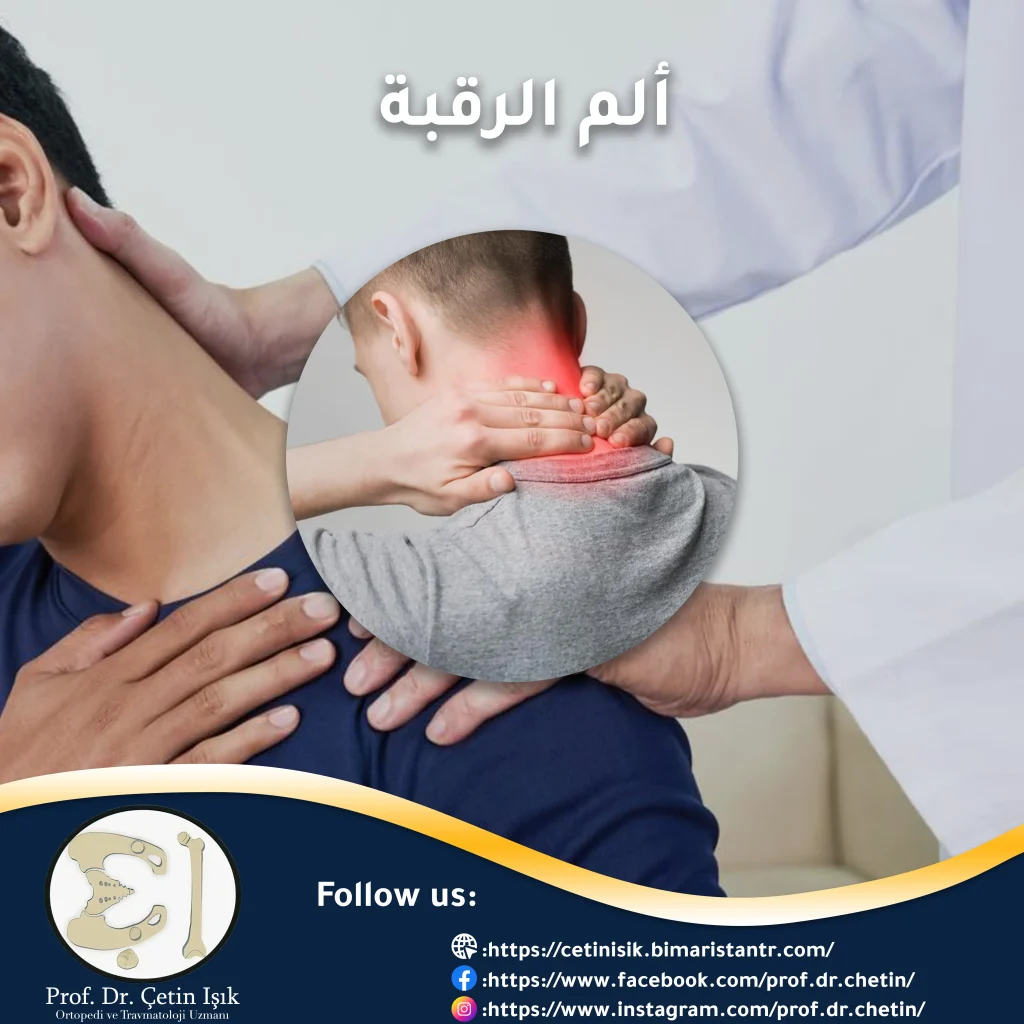مناقير الرقبة أو ما يُعرف طبيًا بـ النابتات العظمية في الفقرات الرقبية هي نتوءات أو بروزات عظمية غير طبيعية تتشكل على أطراف فقرات الرقبة، وتُعد من التغيرات التنكسية المرتبطة بتقدم العمر أو بسبب الضغط المزمن على العمود الفقري. هذا المرض يُعد من أسباب ألم الرقبة المزمن، وقد يؤدي إلى ضغط على الأعصاب أو الحبل الشوكي، مما يسبب أعراضًا عصبية مختلفة.
ما هو مرض مناقير الرقبة؟
مناقير الرقبة (Cervical Osteophytes) هي زوائد عظمية تتكون على حواف فقرات العمود الفقري العنقي (فقرات الرقبة). يُطلق عليها شعبيًا اسم “مناقير” لأن شكلها يشبه منقار الطائر في صور الأشعة.
تتشكل هذه المناقير نتيجة محاولات الجسم للتعويض عن تآكل الغضاريف أو الفقرات، لكن مع الوقت قد تُسبب ضغطًا على الأعصاب أو النخاع الشوكي، مؤديةً إلى أعراض قد تشمل الألم، التنميل، والضعف العضلي.

Causes of neck spurs disease
1. الانحلال الطبيعي مع تقدم العمر (الخشونة أو التنكس الفقاري)
مع التقدم في السن، تبدأ الأقراص الغضروفية بين الفقرات بالتآكل، ما يؤدي إلى احتكاك العظام ببعضها، فتُنتج النابتات العظمية كرد فعل.
2. الإجهاد المزمن للرقبة
نتيجة الجلوس لفترات طويلة أمام الحاسوب أو الانحناء المفرط (مثل استخدام الهاتف)، مما يُعرض الفقرات لضغط متواصل.
3. Cervical herniated disc
عندما يخرج جزء من القرص الغضروفي ويضغط على العصب، قد يتشكل مع الوقت نتوء عظمي حوله.
4. الرضوض أو الكسور السابقة
الكسور أو الإصابات في الفقرات العنقية قد تُحفّز نمو مناقير عظمية أثناء التئام العظام.
5. الأمراض الالتهابية المزمنة
مثل الروماتويد or التهاب الفقرات التصلبي (Ankylosing Spondylitis)، حيث يحفز الالتهاب نمو غير طبيعي للعظم.
Symptoms of neck spurs
قد لا تُسبب مناقير الرقبة أي أعراض في البداية، لكن إذا أثّرت على الأعصاب أو الحبل الشوكي تظهر الأعراض التالية:
| نوع الأعراض | التفاصيل |
|---|---|
| ألم في الرقبة | مزمن أو على شكل نوبات، يزداد مع الحركة |
| Neck stiffness | صعوبة في تحريك الرأس يمينًا ويسارًا |
| headache | يبدأ من الرقبة ويصعد إلى مؤخرة الرأس |
| ألم ينتشر إلى الكتف والذراع | يشبه آلام العصب |
| تنميل أو وخز في اليدين | بسبب الضغط على جذور الأعصاب العنقية |
| ضعف في عضلات الذراع أو اليد | في الحالات المتقدمة |
| عدم التوازن أو مشاكل المشي | إذا ضغطت المناقير على الحبل الشوكي |
أعراض مرض مناقير الرقبة

متى يجب زيارة الطبيب فورًا؟
- فقدان السيطرة على التبول أو التبرز.
- ضعف مفاجئ في أحد الذراعين أو الساقين.
- صعوبة شديدة في المشي أو الحفاظ على التوازن.
- ألم رقبة شديد لا يزول بالأدوية.
هذه الأعراض قد تشير إلى ضغط على الحبل الشوكي وتستلزم التدخل الفوري.
تشخيص مناقير الرقبة
يعتمد التشخيص على:
1. الفحص السريري العصبي
- تقييم مدى حركة الرقبة.
- اختبار ردود الأفعال العصبية وقوة العضلات.
2. الأشعة السينية (X-ray)
- تُظهر شكل المناقير العظمية وحجمها.

3. الرنين المغناطيسي (MRI)
- يقيّم تأثير المناقير على الحبل الشوكي والأعصاب.
4. الأشعة المقطعية (CT)
- تعطي صورة مفصلة عن شكل وحجم النتوءات العظمية.
علاج مناقير الرقبة
أولًا: Non-surgical treatment
يُناسب معظم المرضى في المراحل المبكرة إلى المتوسطة.
1. Medications
- painkillers: مثل الباراسيتامول والإيبوبروفين.
- مرخيات العضلات: لتقليل التشنجات العضلية.
- أدوية الأعصاب: مثل الجابابنتين أو البريجابالين لتقليل التنميل.
- الكورتيزون (فموي أو حقن): في حالات الالتهاب الحاد.
2. Physical therapy
- تمارين تقوية عضلات الرقبة والكتف.
- تمارين استطالة لتقليل الضغط على الأعصاب.
- أجهزة الشد (Traction) في بعض الحالات.
3. تعديل نمط الحياة
- تجنب الانحناء المطوّل.
- استخدام مخدة طبية مخصصة للرقبة.
- أخذ فترات راحة أثناء العمل المكتبي.
- تجنب حمل الأثقال الثقيلة.
ثانيًا: Surgical treatment
يُستخدم عندما تفشل العلاجات المحافظة أو تظهر أعراض خطيرة مثل ضعف العضلات أو ضغط الحبل الشوكي.
أشهر أنواع العمليات:
| العملية | الهدف |
|---|---|
| استئصال النابتة العظمية | إزالة المنقار العظمي الضاغط |
| إزالة القرص الغضروفي المتآكل واستبداله (Disc replacement) | لتخفيف الضغط |
| دمج الفقرات (Spinal Fusion) | تثبيت الفقرات لمنع الحركة المفرطة |
هل يمكن منع مناقير الرقبة؟
نعم، عبر اتباع هذه النصائح:
- الجلوس بوضعية سليمة.
- الحفاظ على وزن صحي.
- تقوية عضلات الرقبة والظهر بالتمارين.
- stop smoking.
- تجنّب الحركات المفاجئة أو الانحناء لفترات طويلة.
Sources:
- Cedars-Sinai
- Healthline
- Cleveland Clinic
- Scoliosis Reduction Center
- Spine-health
- “أعراض مناقير الرقبة وعلاجها” (“Symptoms and Treatment of Cervical Bone Spurs”) was authored by Dr. Ahmed Kahwaji and published on March 24, 2025, on the Bi-Maristan website.
Common questions
It is an overgrowth of bony tissue that causes neck pain and a variety of different symptoms and sometimes requires specialized treatment.
One of the most common is discomfort, pain and stiffness which prevents you from doing your work normally.
It will increase in size in the neck, and with it, the pain will be severe and excruciating for you.
Vitamins D3 and K2.




